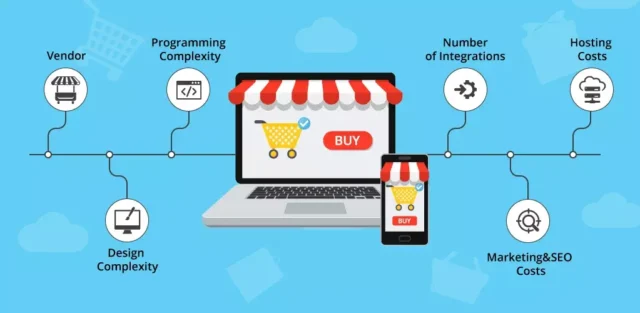In today’s digital age, starting an e-commerce business has never been more accessible. However, many entrepreneurs are deterred by the thought of high costs associated with creating a website. The good news is that you can launch a professional-looking e-commerce site without breaking the bank. Here’s a step-by-step guide to help you create an e-commerce website on a budget.

Table of Contents
Toggle1. Define Your Niche and Target Audience
Before diving into website creation, take time to identify your niche and target audience. This clarity will guide your decisions regarding design, functionality, and marketing. Research your competitors and find gaps in the market that you can fill with your products.
2. Choose the Right E-commerce Platform
Selecting the right platform is crucial for your budget. Here are a few popular options that offer affordable plans:
- Shopify: Known for its user-friendly interface, Shopify has plans starting from $29/month. It offers a 14-day free trial, allowing you to test its features.
- WooCommerce: This is a free plugin for WordPress, making it a cost-effective option. While the plugin itself is free, you will need to pay for hosting and potentially for themes and additional plugins.
- Big Cartel: Ideal for artists and makers, Big Cartel offers a free plan for up to five products. Paid plans start at $9.99/month.
- Squarespace: Great for beautiful designs, Squarespace offers e-commerce capabilities with plans starting at $18/month.
3. Register a Domain Name
Your domain name is your online identity, so choose one that reflects your brand. You can often get a domain name for as low as $10 to $15 per year through registrars like GoDaddy or Namecheap. Many e-commerce platforms include a free domain for the first year, so check for those deals.
4. Find Affordable Hosting Solutions
If you choose a self-hosted platform like WooCommerce, you’ll need hosting. Look for budget-friendly hosting providers such as:
- Bluehost: Offers hosting plans starting at $2.95/month.
- SiteGround: Known for excellent customer support, with plans beginning at $3.99/month.
- HostGator: Provides affordable options, starting around $2.75/month.
5. Choose a Theme
A professional-looking design is crucial for your e-commerce site. Many platforms offer free and paid themes. If you’re using WordPress with WooCommerce, look for free themes in the WordPress repository. Shopify and Squarespace also provide beautiful templates, often at a reasonable cost.
6. Set Up Your Online Store
Once you have chosen your platform and theme, it’s time to set up your store. Here’s what you need to do:
- Add Products: Create product listings with high-quality images and detailed descriptions. Consider using free tools like Canva to design eye-catching graphics.
- Set Up Payment Gateways: Most platforms offer integrated payment solutions such as PayPal, Stripe, or Square. Ensure you choose options that are user-friendly and secure.
- Create Essential Pages: Don’t forget to add crucial pages like About Us, Contact, FAQ, and Privacy Policy.
7. Implement SEO Best Practices
Search engine optimization (SEO) is essential for driving organic traffic to your site. Here are some budget-friendly SEO tips:
- Keyword Research: Use free tools like Google Keyword Planner or Ubersuggest to find relevant keywords for your niche.
- Optimize Product Descriptions: Include keywords naturally in your product titles and descriptions.
- Use Alt Tags for Images: Describe your images with relevant keywords to improve visibility in search engines.
8. Leverage Free Marketing Strategies
Marketing on a budget can be challenging, but there are several effective strategies you can employ:
- Social Media: Use platforms like Instagram, Facebook, and Pinterest to showcase your products. Engage with your audience through posts, stories, and reels.
- Email Marketing: Build an email list from day one. Use free tools like Mailchimp to send newsletters and promotions to your subscribers.
- Content Marketing: Start a blog related to your niche. Share valuable content that attracts potential customers and improves your SEO.
9. Monitor and Optimize
Once your site is live, it’s crucial to monitor its performance. Use free tools like Google Analytics to track traffic, user behavior, and conversion rates. Regularly review your data and make necessary adjustments to optimize your site’s performance and user experience.
Conclusion
Creating an e-commerce website on a budget is entirely feasible with careful planning and resourcefulness. By following these steps, you can launch your online store without incurring high costs. Remember, the key to success lies in continually optimizing your site and marketing strategies to attract and retain customers. Happy selling!


No responses yet